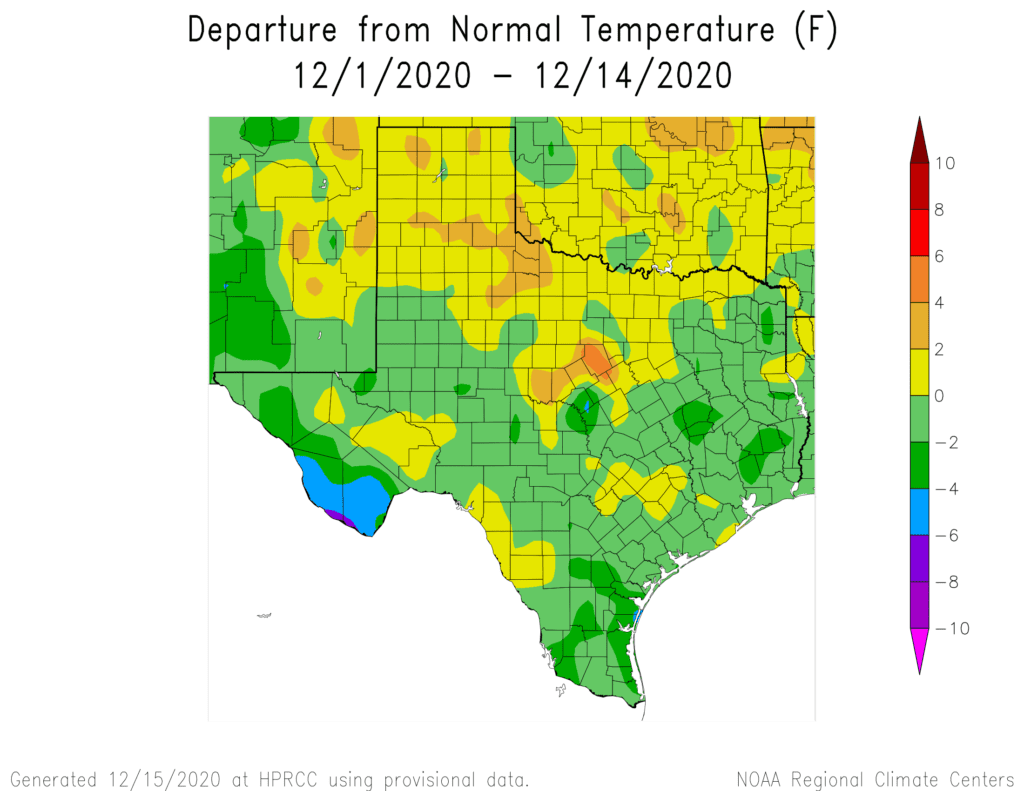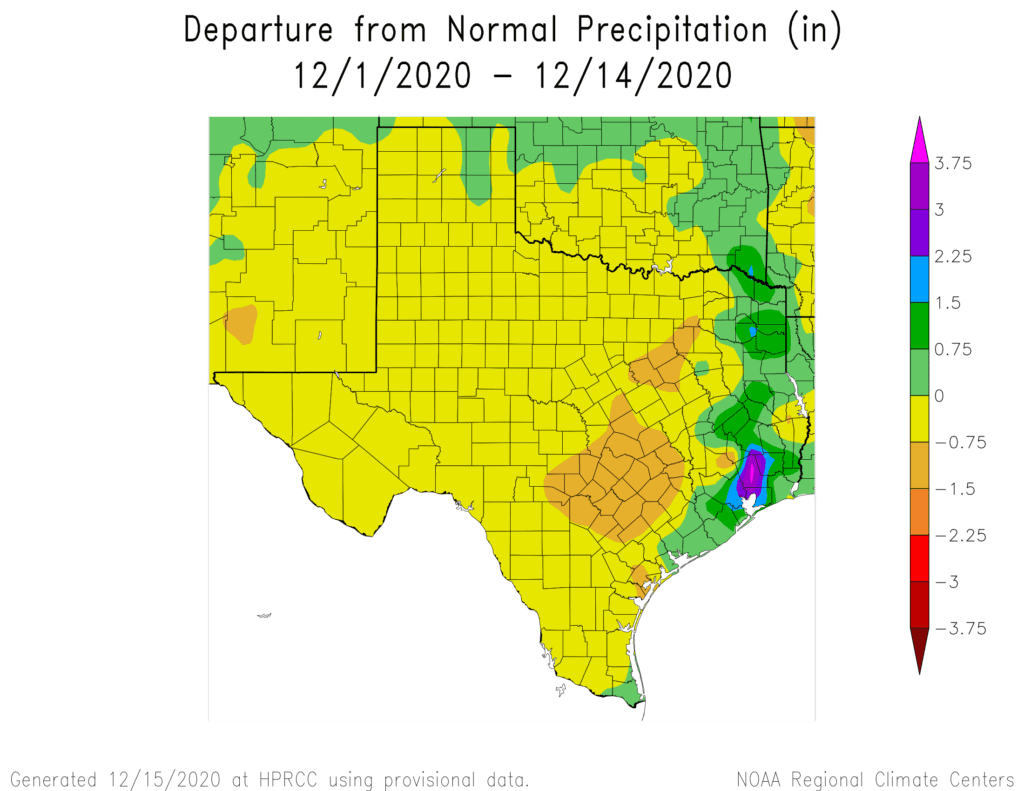We’re approaching the middle of December and it’s a good time to check in how this month’s climate is shaping up. If you remember, the month of November was unusually mild, with temperatures averaging 4 to 6 degrees above normal. At Austin-Camp Mabry, it was the third warmest November on record. November rainfall was roughly 2 inches below normal across the Hill Country and Central Texas regions but was near normal for the middle Texas coast.
Our weather began to change at the end of November as the persistent warm pattern faded with the arrival of several strong cold fronts. In fact, much of the region saw a freeze on the last day of November and the first day of December. We’ve seen additional cold fronts since the first of the month, each bringing additional rounds of cold air. Thanks to these cold fronts, temperatures through December 14th have averaged near-normal to slightly below-normal across much of southern Texas. At Austin-Camp Mabry, the temperature has averaged 54.4 degrees, which is 0.6 degrees above normal. At Austin-Bergstrom Airport, the temperature has averaged 52.3 degrees, which is 0.7 degrees above normal.

December rainfall so far has been very limited across the Hill Country and Central Texas, with most totals averaging well below a quarter of an inch. With rain totals so low since late September, drought conditions are increasing across the two regions. Soil moisture is in short supply and vegetation is stressed. Meanwhile, across the middle Texas coast, totals have been higher with amounts averaging between 1 and 2 inches. Conditions are near normal, with little to no drought.

The outlook for the second half of November doesn’t call for any significant changes to the current pattern. Additional cold fronts are expected, but conditions don’t appears favorable for much rain with any of the fronts. Rainfall is forecast to remain well below normal. While some periods of colder temperatures are expected over the next couple of weeks, no unusually cold air is expected.
Conditions very typical for a moderate La Niña are forecast to persist through January.
Bob


Social Media